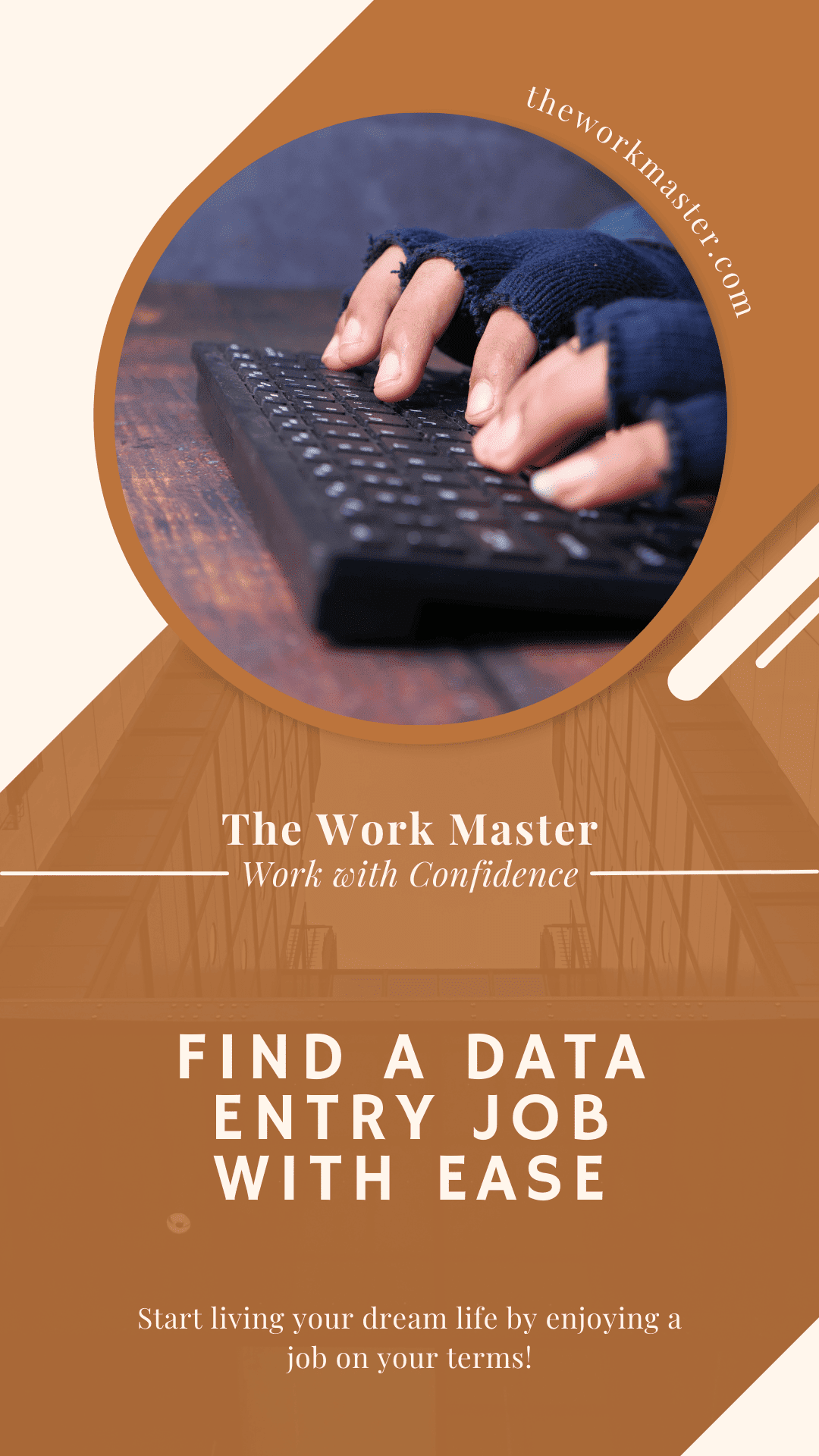Прочети на Български ==> Read in English (US)
In this post, we'll discuss how to find and work data entry part time and get the right expectations for the remote job market.
When I first decided to start working from home 15 years ago, I had no idea what job I wanted. I knew I would find a full-time remote position one day, but I didn't know when.
I was eager to get started. Since I didn't know any relevant jobs for my economics education, I didn't believe I could find such a job. What made things harder was that my primary language was not English.
I have a good level and no concerns about the language in everyday conversations. But things change in work, where you encounter specific terminology.
Working Data Entry Part Time: Find Job Opportunities
- What Job Can I Do Online Without Prior Experience?
- How to Find a Data Entry Job Online?
- How to Utilize Job Platforms for Data Entry Part Time?
- Access the website and sign up for an account.
- Use the website's search bar and filters.
- Get used to the terminology in the field.
- Adjust your profile for working data entry part time.
- Apply, Apply, Apply!
- Conclusion
At this point, I had a valid question. The same one beginner freelancers keep asking me 15 years later. Here it is:
What Job Can I Do Online Without Prior Experience?
The answer to all my concerns was working in data entry part time. Why:
✔ Because it is easy
✔ Because you can do it online
✔ Because you don't need any specific educational background
✔ Because I am a good typer
✔ Because I didn't believe I was ready for something better
I don't say data entry is terrible. It is still very relevant work for job seekers. But if you only want this job because you have no experience working online, you gotta start building your confidence.
If you are entirely new to freelancing and want data entry to be your first position, you might get paid less than you deserve solely due to your lack of experience.
Freelancers established in the area who have their portfolio and know how things work in this area would be much more successful in landing the highest-paying opportunities.
The good news is that once you start taking offers, each one of them will build upon your knowledge and let you increase your rates as you grow in the field.
How to Find a Data Entry Job Online?
Once you have decided that data entry part time is where you want to start as a freelancer, it is time to go to the proper platforms to search. The popular job boards online are the most relevant places to find such jobs.
Job boards are websites listing many job offers corresponding to various skill levels, fields of expertise, and qualifications. In your case, you will be looking for an entry-level, fully remote position.
Look for a job board that fits your standards. Have a look at some of the well-known job platforms for finding data-entry jobs:
Upwork
Freelancer
Fiverr
FlexJobs
Indeed
My standards include being able to directly apply to a company and communicate with them without caring if the competition offered something better. The place where I found most of my jobs was LinkedIn.
You can check Upwork or Freelancer if you are competitive and want to participate in a bidding system.
If you prefer to avoid contacting companies and job providers directly and prefer that they take the first step toward you, Fiverr might be your best bet. You can create a profile and showcase your services along with prices. Interested customers will then contact you and pay you for what you offer.
How to Utilize Job Platforms for Data Entry Part Time?
As a complete newbie, you start with patience. Choose one of the platforms based on your needs. Have a look at their brief descriptions and what they offer. I have a separate post dedicated to job boards, and you can check it here: 21 job platforms to help you get started.
Here are the exact steps you need to follow no matter the job board you chose:
1. Access the website and sign up for an account.
This is necessary if you want to take full advantage of their services. Some job platforms allow you to browse and apply for jobs without registration. Still, if you want to explore the best opportunities deeply, that will be allowed only to registered users.
2. Use the website's search bar and filters.
Type "data entry" in their search field and head to their filters or categories section. If you can find data entry as a category, browse through it and then use the filters.
At this step, your goal is to explore the platform's capabilities and get used to the interface for quicker navigation in the future. Use fully remote, entry-level, and part-time to set your preferred filters.
Adjust your preferences according to your criteria. Be careful about setting too high or too many requirements, as that could leave you with no or just a few opportunities.
3. Get used to the terminology in the field.
You will see specific terms employers use for data entry to find candidates. You can find phrases like:
- data entry clerk
- typist job
- wpm (words per minute - referring to your typing speed)
- retyping work
- administrative tasks
- assistant jobs
All these are synonyms of what you will do. Browse, read, and explore until you get a rough idea of what this market looks like and what employers are searching for.
4. Adjust your profile for working data entry part time.
At this step, you already have an idea of what the employers are looking for by reading through the description of the posted job positions. And now, you want to fit your profile to match your desired job offers.
If your typing speed is excellent, emphasize this in your profile. Include qualities like accuracy, time management, and quick turnaround.
Present yourself as a confident professional who can get the job done. Most platforms require a resume and a cover letter.
Make sure to include only relevant past work experience. You don't need to list all the jobs you've ever done. Include the ones that can boost your profile when you apply for data entry work.
5. Apply, Apply, Apply!
A big mistake I see many job seekers continuously make is stopping on the first application. I know what it feels like. I've been there.
You put so much effort into the preparation, thoroughly researched the job board, and created a killer profile for potential clients. Then you have applied for the perfect position you like and expect to land the job as soon as possible.
That's called wishful thinking. I can't tell you how many times I was in that trap. The "perfect job" you found is also probably perfect for other freelancers. That's how competition is created.
You shouldn't stop on "Apply". You shouldn't stop on "Apply, Apply, Apply" either. You should stop on THIS particular "APPLY" that gives you the "HIRED" function. Got my point?
Final Thoughts
But in the end, you will develop patience, perseverance, and a goal-oriented personality. These qualities will help you in every aspect of your life and are worth improving.
Share with me what your dream job is! Do you want to work data entry part time, or are you in a different area? What's your goal?
Grab our free hand-picked
list of remote jobs now!
*Includes 148 websites with multiple remote
job offers organized into 7 categories.
Bonus: You'll receive updates on new free resources as soon as they are live.
+ Best remote job recommendations and little-known freelancing hacks for time-saving.




Comments
Post a Comment